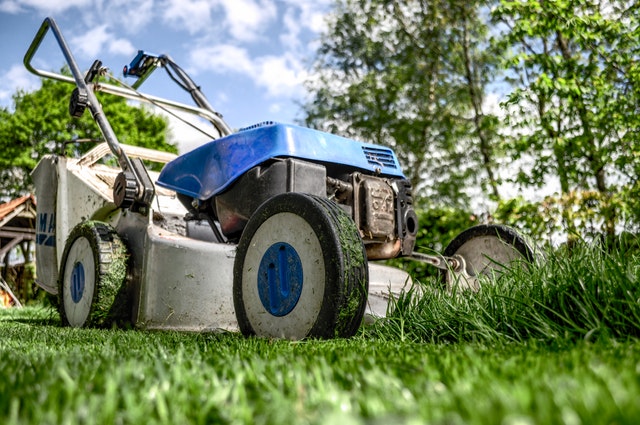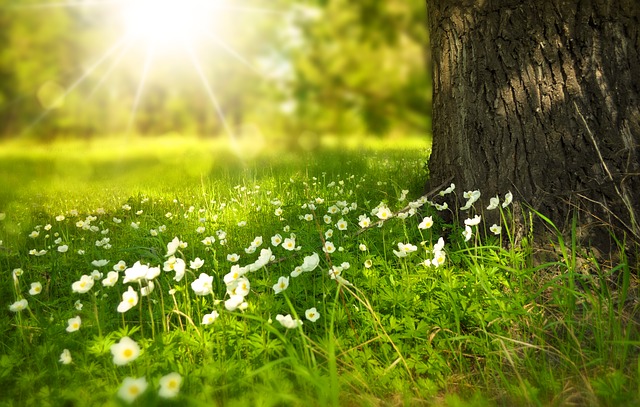
During the spring months, getting your lawn green and healthy can be a challenge. When summer rolls around, it’s about supporting your lawn and keeping it healthy during the hottest months of the year.
You also need to prepare your lawn for any summer activities you plan to enjoy. If you’re hosting barbecues, parties, or family get-togethers, then guests will be walking all over your lawn. You want peace of mind knowing it will survive this trauma.
But don’t worry, maintaining a summer lawn isn’t as hard as some might think. By following the right tips and being consistent in your lawn care routine, you can keep your grass in beautiful shape during the long, sweltering summer days.
This guide will outline some of the best summer lawn care strategies so that you can enjoy the warm months to the fullest while still maintaining beautiful, lush grass.
“If you want your lawn to thrive during summer, you’ll need to take extra steps to preserve its health. It won’t happen on its own.”
Summer Lawns: What Makes Them Different?
As we briefly mentioned above, caring for a summer lawn can vastly different than in the spring or fall growing season. During spring, your lawn has plenty of moisture and rain to work with. The spring months are ideal for plants and grass is to achieve maximum growth and establish a baseline of health for the following summer months.
Fall lawn care is its own category. During the fall months, sunlight is less harsh or often present, and cooler temperatures encourage healthier, more beautiful grass.
The summer months can be the most damaging for your lawn. With excessive heat, drought damage, and other factors don’t be surprised if your lawn turns dry and brown without proper care between June and September.
Unfortunately, summer is when you want your lawn to be at its best. Who wants to invite their family and friends over for a barbecue when they have a dry and unsightly yard?
You may try to fight summers impact on your lawn by fertilizing, overwatering, and doing everything you can to encourage new growth. But if you don’t understand the seasonal changes of different grass species, this may cause more harm than good.
In general, there are two categories of turfgrasses:
Cool-season grasses – which include bluegrass, rye, and fescue. These grasses grow best when temperatures are around 60F or below.
Warm-season grasses – include Zoysia, Centipede, Bermuda, and St. Augustine varieties. These grasses are the healthiest when temperatures are around 70F or higher.
Regardless of which grass species you have growing on your lawn, your lawn may struggle when temperatures soar into the 80s and above. Cool season grasses will have the most challenging time during summer months, experiencing slow growth, faded color, and displaying signs of wear and tear. They’ll be less likely to recover from your fun summer events, as the foot traffic destroys its structure and causes permanent damage.
If you want your lawn to thrive during summer, you’ll need to take extra steps to preserve its health. It won’t happen on its own, especially if you live in a hot, dry place like Arizona or New Mexico. If you live in a wet climate like Florida or Washington, you need to use different strategies to preserve your lawn’s health and appearance.
Fortunately, many of the strategies we’ll talk about for summer lawn care are easy to implement and maintain. In most cases, you only need to make a few small changes to your lawn care strategy to adapt to summer’s high heat.
Let’s take a look at our top tips for summer lawn care and how often you should be implementing these strategies.
Be Smart About Watering
You already know you need to water your lawn more during the summer, especially if you live in a dry climate. However, you may not know how important it is to check how deeply your water is penetrating the soil. If your soil is dry and hard, the water may not reach deep enough into the earth for your lawn to use it appropriately.
It’s essential to water your lawn as deeply as possible. We recommend using a small trowel or a screwdriver to find out how deeply the water is penetrating your soil when you turn on your sprinklers.
Ideally, water should reach between 4 and 6 inches deep into your soil. If it’s not reaching these layers of earth, it may not be as effective for your grass.
If you water deeply, your grass is more likely to develop drought-tolerant roots. This will protect your lawn in the event of future weather changes which could negatively impact its health.
Remember: your lawn should have at least 1 inch of water each week to preserve itself. If you’re experiencing a heatwave or your summer temperatures are higher than usual on average, it will need more water then you expect.
We recommend watering your lawn early in the day, as you can minimize fungal growth and evaporation. Think about the last time you sprayed water on a hot sidewalk and how quickly it evaporated during a summer’s day, it probably took less than 15 minutes.
Apply this logic to your lawn.
If you water your lawn when the sun is at its highest point in the day is hot, there’s a good chance the water won’t reach the roots at all. It may evaporate before your grass can absorb it, meaning it won’t benefit your lawn.
It’s important to either water your grass regularly or refrain from watering at all. If your grass goes brown or dormant, trying to over-water it to “bring it back to life” won’t help at all.
If your lawn goes brown and dormant during the summer, leave it that way until the fall. When the summer changes again, your grass should recover. If you overwater it during this state, you’ll promote fungal growth and could cause future irreversible damage.
Mow High and Mow Often
We get it -mowing the lawn isn’t always fun. Especially during the summer when the sun is high, the days are hot, and sitting outside for hours at a time may not sound like the best way to spend an afternoon.
During this time of year, you may be tempted to mow your lawn low and minimize the number of times you cut the grass. Unfortunately, this practice can spell disaster for your lawn and ultimately cause dryness, brittleness, and dormancy.
Why?
When your grass has longer, taller blades, it will develop deeper roots. These deep roots will find water underground and provide a support system that will help your lawn stay healthier over time.
Additionally, tall blades of grass provide shade for the soil underneath, cooling it. By cooling the soil, tall blades of grass can minimize evaporation and reduce how often you water your lawn.
Not to mention, taller grass usually looks thicker and more aesthetically pleasing than low cut lawns. If your grass is suffering from the high heat of summer, letting it grow a little longer than usual can be a great way to improve its appearance.

We recommend mowing more regularly, cutting less than 1/3 of your grass’s length each time. If you cut more than 1/3 of your grass, the clippings could smother the ground underneath and prevent water from penetrating the soil.
We recommend letting your grass clippings lie after you mow. Over time, the grass clippings will breakdown and compost into your soil, feeding your lawn and promoting better health.
Additionally, cutting large portions of your grass at one time can cause trauma and ultimately impact itself.
Keep your mowers blades as sharp as possible. Over time, your mowers blades may become dull and start tearing your grass instead of cutting it. During the summer months, this tearing can be tragic for your lawn.
Balance Your Fertilizing Schedule
Fertilizing plays a crucial role in your summer lawn care schedule. By fertilizing your lawn, you can promote healthier, more lush-looking grass in just weeks. However, with fertilizer, too much is not a good thing.
If your lawn looks like it’s struggling, don’t be tempted to over-fertilize to save it. Yes – fertilizing your grass is one of the easiest ways to give the soil nutrients and promote growth. However, over-fertilizing can have the opposite effect you’re looking for.
If you over-fertilize your lawn, you may “burn” your grass and cause permanent damage. Instead, it’s essential to find the recommended amount of fertilizer for your yard’s grass type and apply it accordingly.
In general, one pound of nitrogen per 1,000 square footage of turf is the ratio of fertilizer to grass we recommend. This may vary if you’re using other types of fertilizers, and your lawns species of grass may have its own unique fertilizer needs.
We recommend looking at a fertilizer calculator for a quick look at how much you should fertilize your lawn. Ultimately, it’s best to consult a professional if you aren’t sure what your lawn needs, but a calculator can be a good place to start. These can be found online.
Ideally, you should fertilize your lawn before mid-summer begins. If your yard is looking less than ideal as the middle of summer approaches and the temperatures increase, resist fertilizing to prevent further damage.
We recommend fertilizing no later than 30 days before the summer heat arrives. If you apply it during the hottest parts of the year, you’ll invite new growth of tender, delicate grass that will not survive the intense summer weather.
Additionally, it’s important not to fertilize a dormant lawn. When your grass greens up again in the autumn months, try fertilizing it to prepare it for the next spring. If you fertilize a dormant lawn, you’re wasting your fertilizer and may cause added damage that will prevent healing and new growth the following season.

Final Thoughts
For many of us, summer is our favorite time of the year. Between the long days and the sunshine, summer is the perfect time to gather with friends and family to enjoy the beautiful weather.
If you host get-togethers or activities at your home, having a beautiful lawn may be an important part of your summer plans. After all, who wants to invite their family to see a dry, dormant yard?
Before you start your summer activities, we recommend finding the most highly trafficked parts of your yard. Place steppingstones in these areas to prevent trauma from guests walking through your lawn.
We get it – you want to maintain your lawn yourself and give it everything it needs to be lush and beautiful. However, the summer months can be exceedingly harsh for lawns and cause a wide array of challenges for homeowners and lawn care professionals.
If you’re struggling with dry grass, damage, mold, fungus, or grubs, and you can’t seem to manage, it’s time to speak with a lawn care professional. Consult with passionate, knowledgeable professionals and you’ll learn how to best care for your lawn. You’ll be able to keep your grass healthy, all summer long.
When your lawn is damaged, be sure to research before you act. What seems beneficial could cause added harm to your yard. Be sure to speak with an expert before you start treating your yard with new tactics to learn more about what will work and what will make your situation worse. Best of luck with your summer lawn!